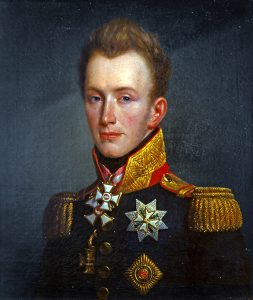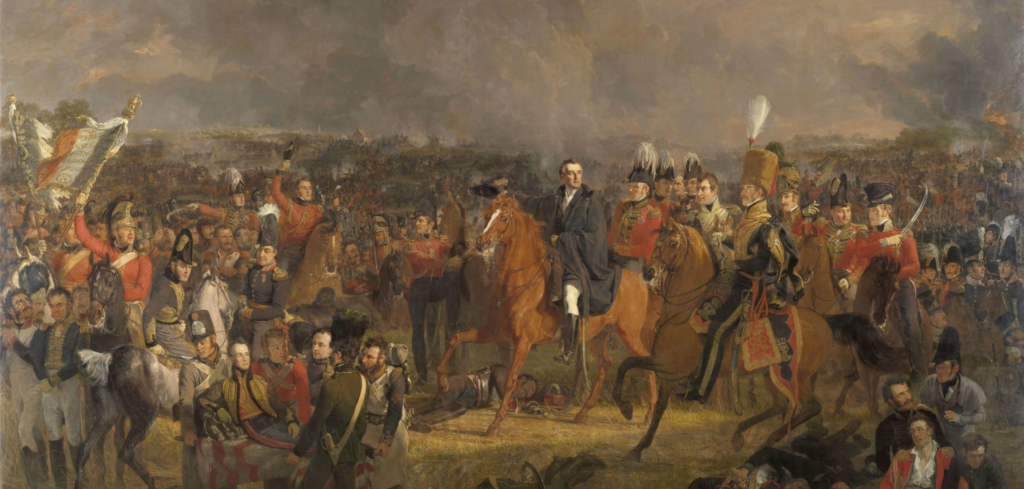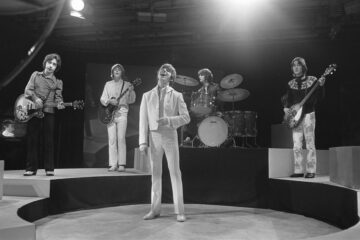The City of Oange , NSW
When we arrived in Australia in 1983 I was aware that there was a Dutch connection with the city of Orange (named by the Surveyor General Thomas Mitchell after his friend the Prince of Orange). However, apart from the interested history buffs, very few knew about this Dutch connection.

On one of our early explorations of New South Wales, with great anticipation, we visited Orange. To my disappointment, not only was there no commemoration of the Prince but, to my dismay, the Tourism Office didn’t even know that their city was named after this Dutch Prince.
Nothing much changed during subsequent years because when we visited Orange in 2005 I basically got the same response. However, someone overheard my question at the Tourism Office and told me about a winery called ‘Prince of Orange’.
That was interesting, and that is how we got to know Coral and Harald Brodersen – she an Aussie and he a Dane!
And these two people have single-handedly put Prince Willem of Orange back on the map in Orange. They have established an excellent relationship with the Dutch community in Australia, especially with the Dutch Ambassador and the Consul General of NSW. Coral has also presented a case of their wine to the present Prince of Orange, Prince Willem Alexander and his wife Maxima.
Apart from their wines the winery is also renowned for its annual dinners.
The theme of the 2008 event was the life and work of Sir Thomas Mitchell; most probably Australia’s most important Surveyor General.
Being at that time the chairman of the Convict Trail Project (which looks after the convict-built Great North Road between Sydney and Newcastle, a road that was surveyed by Mitchell in 1828) I was doubly interested in attending this dinner.
Mitchell had met Prince Willem of Orange (the later King Willem II) during the Napoleonic Wars, where they were both assigned as aides-de-camp to the Duke of Wellington. The Prince and his family had fled the Netherlands after Napoleon had invaded his country and lived in exile, first in Germany and then in the UK. It is often overlooked that the defeat of Napoleon was at the hand of the Allied forces (Britain, Netherlands, Belgium and Prussia), it certainly was not just a British affair as Wellington made it believe. As a matter of fact it were the Prussian that took a leading role in the final battle at Waterloo and the event took place on Dutch soil.
Prince William of Orange
The following is abstract from the article: ‘The King as Father*, Orangism and the Uses of a Hero: King William I of the Netherlands and the Prince of Orange, 1815–1840’ by Jeroen Koch. It explains the importance and popularity of Prince William.

Here the Duke of Wellington is receiving the message that Prussian forces are coming to his aid. Wellington, commander of the Anglo-Dutch troops, is the central figure in this group portrait of the major players at Waterloo. Lying wounded on a stretcher in the left foreground is the Dutch Crown Prince, later King William II. Originally intended for Wellington, the painting remained in the Netherlands thanks to William I who bought the picture for his son.
The popularity of the Prince of Orange was above all the fruit of the Battle of Waterloo, fought on 18 June 1815. In the Netherlands the hero of Waterloo was not Arthur Wellesley, the Duke of Wellington (although King William I made the British commander-in-chief ‘Prince of Waterloo’ in 1815). It was not Gebhard Leberecht von Blücher or August Neidhardt von Gneisenau, the German heroes of the battle, either. Nor was it Napoleon, whom the French still seem to regard as the real victor. In the Netherlands the hero of Waterloo, and of Quatre-Bras two days before Waterloo, was—and is— the Prince of Orange, the former adjutant of Wellington in the Peninsular War. The legendary battle would be invoked over and over again to augment Orange rule.
Waterloo had been a gift from heaven for his father the Dutch king Willem I. It meant a lot that Napoleon was given his coup de grâce on Dutch soil (at that stage the Southern Netherlands now Belgium, his territory). First, for the Great Powers, the king realised, the new kingdom had proven its worth; it indeed was le Boulevard de l’Europe—the bulwark against renewed French aggression that the Congress of Vienna wanted it to be. Second, Waterloo, and especially the heroic role of the 22-yearold prince William, who was wounded on the battlefield, gave his father and the House of Orange the longed-for popular legitimacy, as the royal family immediately recognised.

In 1826, a Dutch lion, cast in iron, was placed upon an artificial hill on the battlefield. This also was a tribute to the Prince of Orange; although irreparably damaging the battlefield— much to the chagrin of Wellington—hill and lion mark the place where the prince was wounded.
Wilhelmina of Prussia, the king’s old mother, wrote a few weeks after the battle. ‘The complete and glorious victory of the allies, gained in the Netherlands and deciding the fate of France and all of Europe and saving the kingdom of my son from a mortal threat; and the heroic part played by my grandson it really established the Royal House and gave it firm ground’.
And every year Waterloo would be remembered: from 1816 until the Second World War, 18 June was a national holiday in the Netherlands. The remembering of the last battle against Napoleon had immediately become part of William I’s royal soft power tools.
Thomas Mitchell
Thomas Mitchell and the Prince were born in the same year, 1792. It was at the battlefields in Spain (Peninsula War 1811/1812 where the allied forces fought Napoleon) that the friendship between these two nineteen-year-old boys blossomed and when Mitchell surveyed the Central West of NSW in 1833 he named this place Orange in honour of his friend.
At the dinner the current Surveyor General of NSW, Warwick Watkins, presented Coral and Harald with two magnificent framed pictures – one of Prince Willem of Orange and one of Sir Thomas Mitchell. Henceforth these will be proudly on display at the winery.
Because of all their good work, the Dutch connection with Orange is now much more widely known in the city itself; as its Mayor John Davis said at the dinner. It provides both Australia and the Netherlands with a great new platform to build on the work of Coral and Harald.
The relationship opportunities between these communities that arise from here on will certainly be explored. I can envisage a Prince of Orange display at the museum, perhaps a statue of the Prince and some heritage and tourism activities that will encourage both Australians and Dutch tourists to visit. Equally I wouldn’t be surprised if people from Orange, while travelling to Europe, are motivated to find out more about this Prince, and later King, of the Netherlands after which their town has been named.
Thomas Mitchell honoured in Orange
With my Dutch background and interest in history I have of course always been interested in the NSW city of Orange.
When we arrived in Australia in 1983 I was aware that there was a Dutch connection with the city of Orange (named by the Surveyor General Thomas Mitchell after his friend the Prince of Orange). However, apart from the interested history buffs, very few knew about this Dutch connection.
On one of our early explorations of New South Wales, with great anticipation, we visited Orange. To my disappointment, not only was there no commemoration of the Prince but, to my dismay, the Tourism Office didn’t even know that their city was named after this Dutch Prince.

Nothing much changed during subsequent years because when we visited Orange in 2005 I basically got the same response. However, someone overheard my question at the Tourism Office and told me about a winery called ‘Prince of Orange’.
That was interesting, and that is how we got to know Coral and Harald Brodersen – she an Aussie and he a Dane!
And these two people have single-handedly put Prince Willem of Orange on the map in Orange. They have established an excellent relationship with the Dutch community in Australia, especially with the Dutch Ambassador and the Consul General of NSW. Coral has also presented a case of their wine to the present Prince of Orange, Prince Willem Alexander and his wife Maxima.
Apart from their wines the winery is also renowned for its annual dinners. And they have extended their attention to the other great man behind this city.
The theme of the 2008 event was the life and work of Sir Thomas Mitchell; most probably Australia’s most important Surveyor General.
Mitchell had met Prince Willem of Orange (the later King Willem II) during the Napoleonic Wars, where they were both assigned as aides-de-camp to the Duke of Wellington. The Prince and his family had fled the Netherlands after Napoleon had invaded his country and lived in exile, first in Germany and then in the UK.
At the dinner I met Edward “Ted” Sly, the great great grandson of Sir Thomas Mitchell, from Mitchell’s daughter Camilla Mann (nee Mitchell). They are all long ‘livers’. Ted is 90 and his mother was also 90 before she died. So there is nearly a first-hand connection with the great ‘Explorer General’
At the event Warwick Watkins provided his support for the Convict Trail Project and was happy to link his name to the good work that is done by this organisation.
Paul Budde
See also: Orange Dutch Society
More information:
Winery: www.princeoforangewines.com.au
Background Prince Willem of Orange (Wikepedia):
http://en.wikipedia.org/wiki/William_II_of_the_Netherlands
Background Sir Thomas Mitchell (Wikepedia): http://en.wikipedia.org/wiki/Sir_Thomas_Mitchell


